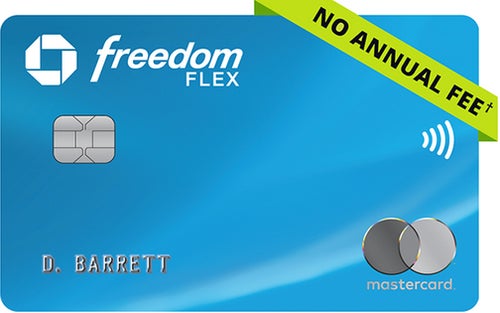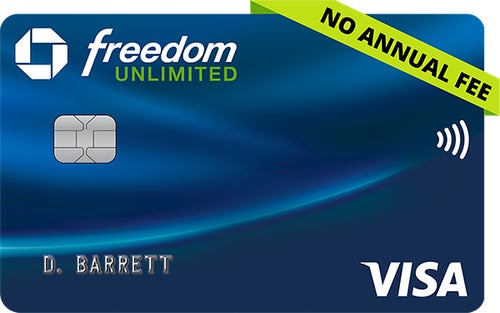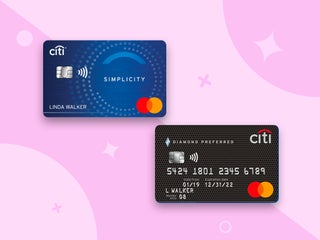Summary
The Chase Freedom Flex and Chase Freedom Unlimited cards share similar names, so you may wonder if their rewards structures are the same, too. While there’s plenty of overlap, each card has unique advantages.
The content on this page is accurate as of the posting date; however, some of our partner offers may have expired. Please review our list of best credit cards, or use our CardMatch™ tool to find cards matched to your needs.
The Chase Freedom Flex®, or the Chase Freedom Unlimited®? The card names sound similar, and, at a glance, the rewards look alike, too.
But not so fast: Although these two Chase cards have a lot in common, they feature a few key differences to keep in mind when deciding which is the better fit for you.
Both the Chase Freedom Flex and Chase Freedom Unlimited offer hefty sign-up bonuses, along with bonus cash back on dining and drugstore purchases, as well as travel purchased through Chase Ultimate Rewards.
The main difference is in the highlights of their rewards structures: The Freedom Flex card offers 5% cash back on rotating quarterly categories, while the Chase Freedom Unlimited offers a flat-rate 1.5% cash back on everything.
Read on to get a rundown of the pros and cons of each card, as well as which card is better suited for you, based on your spending habits.
Chase Freedom Flex vs. Freedom Unlimited
| Card |  Chase Freedom Flex® |  Chase Freedom Unlimited® |
| Rewards rate |
|
|
| Sign-up bonus |
|
|
| Annual fee | $0 | $0 |
| Estimated ongoing yearly rewards value ($1,325 monthly spend) | $493 | $353 |
| Who should get this card? |
|
|
Earning rewards
When comparing the Chase Freedom Flex to the Freedom Unlimited, the key factors are how they earn rewards and which earning structure will give you the most points.
Earning with the Chase Freedom Flex
The Chase Freedom Flex card offers a combination of year-round and quarterly rotating bonus cash back categories. Each quarter, you can enroll in a new bonus category from the Chase cash back calendar and earn 5% back on the first $1,500 you spend in that category (then 1% back after you reach the $1,500 threshold). You do have to log in to your Chase account and activate the rewards category by the deadline each quarter to earn the 5% rate. For example, to earn 5% cash back during the first quarter of 2022 (on grocery stores and eBay), you must activate the category by March 14, 2022.
Throughout the year, you’ll also get 5% back on all travel booked through the Chase Ultimate Rewards portal, 5% cash back on Lyft purchases through March 2025, 3% back on dining and drugstore purchases and 1% back on all other purchases.
Plus, the card is currently offering a $200 bonus for spending $500 in the first three months..
Earning with the Chase Freedom Unlimited
Like the Freedom Flex, the Freedom Unlimited earns bonus cash back on Ultimate Rewards travel (5% back) and dining and drugstore purchases (3% back), plus Lyft purchases through March 2025 (5%). However, instead of rotating cash back categories, the Freedom Unlimited offers 1.5% cash back on general purchases. This is a simple earning structure that may appeal to those who don’t want to deal with rotating bonus categories or quarterly activations. The Freedom Unlimited is also offering an additional 1.5% cash back on everything you buy (on up to $20,000 spent in the first year).
Redeeming rewards
Both the Freedom Flex and the Freedom Unlimited redeem rewards in basically the same way. The earnings for both cards are often marketed by Chase as cash back, but you are credited with Ultimate Rewards points. So when Chase says you’ll earn 5% back on rotating categories, you actually will get 5 Chase Ultimate Rewards points per $1 spent in those categories (up to a maximum of $1,500 per quarter). If your only Chase credit cards are ones with no annual fee (like the Freedom Flex or Freedom Unlimited), then you can’t transfer them to Chase’s hotel and airline travel partners. However, you can redeem them for 1 cent per point through the Chase Ultimate Rewards portal.
Where you can really maximize your redemptions with these cards is if you also have a premium Chase credit card, like the Chase Ink Business Preferred® Credit Card or the Chase Sapphire Reserve card. Chase allows you to transfer your Ultimate Rewards points between different credit cards for no fee, so you can earn Ultimate Rewards points with your Freedom Flex or Freedom Unlimited card and then transfer the points to your premium Chase card. That will allow you to redeem them through the Ultimate Rewards travel portal for up to 1.5 cents per point or transfer to valuable Chase travel partners like United Airlines, Hyatt Hotels or Marriott.
Annual fee
This is an easy category to compare the Chase Freedom Flex and the Chase Freedom Unlimited, since neither has an annual fee.
Intro APR offers
Both cards offer introductory 0% APR offers. In each case, you’ll get 0% APR for 15 months from account opening on purchases as well as balance transfers. After the introductory 0% period, your interest rate will jump to a variable APR of 16.49% to 25.24%. Be sure that any balance you have is completely paid off before the 15-month introductory period ends.
Note that if you’re planning to do a balance transfer with either card, there’s a fee. During the first 60 days of account opening, it’s either $5 or 3% of the transferred amount, whichever is greater. After that, it’s $5 or 5% of the balance transfer, whichever is greater.
Perks
The Freedom Flex and the Freedom Unlimited don’t come with nearly as many perks as other premium cards that have annual fees. Both cards offer a complimentary three months of DoorDash DashPass, where you can get unlimited deliveries for a $0 delivery fee on eligible orders over $12. After the free three-month introductory period, you’ll be automatically enrolled for 50% off for the next nine months, so be sure to cancel before then if you don’t want to keep the membership.
As is customary with most credit cards, you have $0 fraud liability, so you don’t have to worry if someone else uses your credit card information for unauthorized purchases. Both cards also offer purchase protection for any new purchases for 120 days against damage or theft. This benefit is for up to $500 per claim and $50,000 total per account. Additionally, both offer trip interruption insurance of up to $1,500 per person and $6,000 per trip if your trip is canceled due to severe weather, sickness or other covered situations.
The Freedom Flex also offers cellphone protection, if you use your card to pay your regular monthly cell phone bill. You are covered for up to $800 per claim and $1,000 per year for theft or damage, but not if you simply lose or misplace your phone. There is a $50 deductible per claim, and you can make a maximum of two claims in a 12 month period.
Chase Freedom Unlimited: Best for someone who wants a simple cash back credit card
Since the Chase Freedom Unlimited card offers a generous cash back rate on general purchases, it makes for a great all-purpose cash back card.
Cardholders automatically receive 1.5% cash back on general purchases, with no rotating categories and no cap on the amount of rewards they can earn. For those who don’t want to have to deal with activating rewards categories each quarter, this card is ideal.
Taking into account the card’s bonus categories of Ultimate Rewards travel, dining and drugstore purchases, we estimate that it carries an average rewards rate of around 2.22% back based on typical consumer spending. Based on that rate, you stand to earn a fair amount of cash back each year by using it for every purchase. We estimate that the average cardholder who spends around $1,325 on the card per month can earn around $353 in cash back per year.
Chase Freedom Flex: Best for someone who wants to maximize rewards
For those who have the time and know-how to manage rewards categories, the Chase Freedom Flex card offers the opportunity to earn a higher rewards rate on their spending.
In addition to bonus cash back in the year-round categories of Ultimate Rewards travel, dining and drugstore purchases, cardholders receive 5% cash back in popular rotating categories such as grocery stores, gas stations, online shopping and wholesale clubs.
For a cardholder who spends an average amount in the Freedom Flex’s year-round categories, we estimate that it offers a 1.72% average earning rate. This is less than the Freedom Unlimited’s 2.22% average cash back rate, but the card’s rotating cash back categories also need to be considered.
If you max out these categories each quarter, you’ll earn at least $300 in cash back per year. Combined with the card’s year-round bonus categories, that gives you an average annual total of around $493, far exceeding the amount the average user would earn with the Chase Freedom Unlimited card.
Keep in mind, however, that it may be difficult to max out every quarterly bonus category. It all comes down to how well a given category lines up with your spending and how much effort you’re willing to put into planning your purchases to maximize each category.
Bottom line
The Chase Freedom Flex and Freedom Unlimited cards are both great cash back cards that appeal to many types of consumers. The Freedom Flex card is a great option for cardholders who want to maximize their rewards and the Freedom Unlimited card is a great way to go if you want to keep things simple.
If, however, you like travel rewards and you want to get the most bang for your buck, you should consider pairing the two cards to take advantage of both cards’ bonus categories or even applying for a trio of Ultimate Rewards cards.
The editorial content below is based solely on the objective assessment of our writers and is not driven by advertising dollars. However, we do receive compensation when you click on links to products from our partners. Learn more about our advertising policy
Editorial Disclaimer
The editorial content on this page is based solely on the objective assessment of our writers and is not driven by advertising dollars. It has not been provided or commissioned by the credit card issuers. However, we may receive compensation when you click on links to products from our partners.






